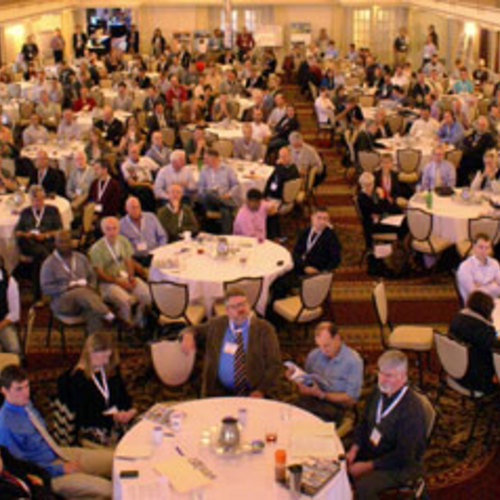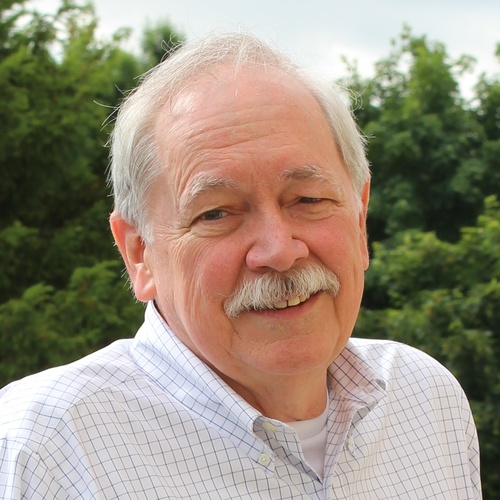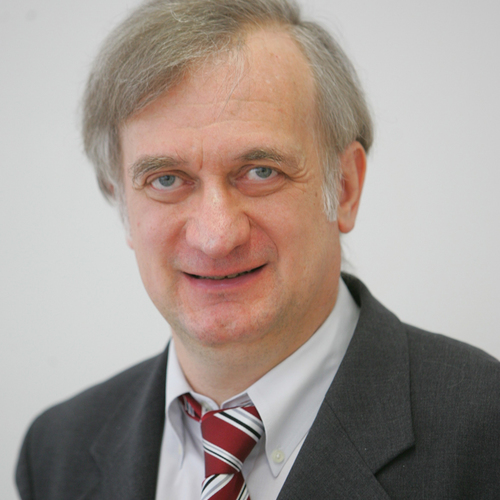
Image Credit: Energy Vanguard
Image Credit: Energy Vanguard John Proctor's secret building science lab in the attic of his office in San Rafael, California.
Image Credit: Energy Vanguard Dr. Achilles Karagiozis of Owens Corning giving the closing keynote speech at the North American Passive House Conference.
Image Credit: Energy Vanguard Martin Holladay's foam hog sketch demonstrates the problem with diminishing returns.
Image Credit: Martin Holladay A lot of planes take off from and land at the San Francisco airport, and we had a great view of the action from the conference hotel's patio.
Image Credit: Energy Vanguard
The 9th annual North American Passive House Conference happened two weeks ago in the San Francisco Bay Area of California. The Passive House Institute U.S. (PHIUS) has been holding this conference every year since 2006, and it just keeps getting better.
I’ve been to the last three now, and it’s one of my favorite events of the year, right up there with Building Science Summer Camp (Dr. Joe Lstiburek’s conference) and Possum Drop (the New Year’s Eve party I go to each year in Georgia). This year’s conference seemed especially good because of the direction PHIUS is taking the passive house movement in North America.
Great people
Before I start telling you why the conference was so great, though, let me remind you that I’m on the board of directors for PHIUS. But don’t think that means I’m saying all this is great because I’m on the board. It’s actually the other way around.
During the preconference sessions, I got to spend some time with my friend Jeff Reilich from Chapel Hill, North Carolina. (I don’t know if I mentioned it here before, but he’s the one who once worked on a house with an 8,000 cfm range hood!) We even took off for a while one day and drove over to the ocean and the next day went up to San Rafael to see John Proctor. Not part of the NAPHC, I know, but still a nice part of the overall experience. Plus, Proctor even invited us up into his attic to see his secret lab (photo below). Every secret lab needs a nice oriental rug, you know!
I think it was Jeff who said the folks at the NAPHC are the smartest and most dedicated building science folks he spends time with. During one of the sessions at last year’s conference, Joe Lstiburek leaned over to me and said, “I really like this club.”
I’ve felt the same thing, and so did many others who attended this year or years past. The folks involved with this movement are doing amazing work.
Dynamic modeling
Dr. Achilles Karagiozis of Owens Corning gave the closing keynote address and did so with his usual smart and funny flair. The first part of his talk was a response to Dr. Lstiburek’s keynote in Denver two years ago, where Lstiburek said that the first passive houses were igloos and that you’re probably doing something wrong if you need to use WUFI.
Karagiozis, one of the developers of the WUFI software tool, responded by posing a scenario in which Lstiburek was stranded in Alaska after a helicopter crash and all he had to survive with was his laptop and WUFI. Karagiozis’s hilarious models killed Joe off two or three times before finally getting to an igloo design that worked.
The real meat of Karagiozis’s talk came after the funny opening segment, when he began discussing the power of dynamic modeling compared to the static modeling usually done.
When you use a tool like REM/Rate (the main home energy rating software) or PHPP (the spreadsheet modeling tool created by the German Passive House Institute), you get results for one particular set of conditions. You enter things like heating degree days and outdoor design temperatures and get numbers for how well the house performs… at those particular conditions. As the temperature and rainfall and cloudiness vary, however, from hour to hour and day to day, your model doesn’t tell you what’s happening unless you change the numbers and run it again.
The German Passivhaus program relies on the static modeling of PHPP. PHIUS is still certifying projects using PHPP, but passive house consultants certified through PHIUS can choose to use WUFI Passive as an alternate modeling tool.
OK, this is going deeper than I planned but you have to know something about modeling landscape to understand Karagiozis’s point. So, last year I took the WUFI 1-D class and learned a little about one-dimensional hygrothermal modeling. Briefly, it’s a way of modeling the heat and moisture flows through a building assembly. You put in the assembly details and the indoor and outdoor conditions, and then run it for whatever period of time you choose.
WUFI Passive does the modeling for a whole building enclosure, assembly by assembly. It also incorporates the requirements of the Passivhaus standard so you know if the modeled home meets the requirements for certification. It’s a nice tool, and Karagiozis has great confidence in it. “I have not seen a more accurate simulation of indoor conditions than using WUFI Passive,” he said during his keynote.
New climate-specific standards
Graham Wright, PHIUS senior scientist, revealed the latest evolution of PHIUS’s new climate-specific standards in his talk on the first morning of the main conference. The first room he was scheduled in was way too small because this was where everyone wanted to be, so we moved back to the room where Bill Rose had recently finished giving the opening keynote presentation.
Wright’s presentation (pdf) was composed of 80 slides that averaged probably more than 100 words per slide. As you might suspect, it was not a presentation to be digested and understood by the end of his 80 minutes unless, say, you’re on the PHIUS technical committee and helped do a lot of the background work. I’ve got a copy of the presentation and am slowly working my way towards a bit of a grasp of the ideas. Never having gone through the passive house training makes it more difficult. (Katrin Klingenberg gave an introduction to the standards changes a few months ago here on Green Building Advisor.)
Let me try to give you a quick summary of some of the main points Wright made.
- Motivation: “We’re proceeding the way we are because, as experience has accumulated in different climate zones, the facts obliged us to.”
- Certification: Still performance based, still pass/fail.
- The three pillars. PHIUS is going to stick with the three main components of PH certification: airtightness, source energy, space conditioning.
- Airtightness: Changing from air changes per hour at 50 Pascals to cfm50/square foot of building enclosure area. The threshold will be ~0.05 cfm50/sf. (I love this change volume is the wrong metric to use here.)
- ERV/HRV rating protocol. Changing the “12% deduction” to other adjustments. (I have little knowledge of this one, so I can’t really say anything about it.)
- Source energy. Making some changes to how the calculations are done here. For more details, see the report when it’s released.
- Lighting and plug loads. Adjusting upward because PHPP model was too low. “Intolerable, must fix,” according to Wright’s slide.
- Economics. This was one of the main issues. 4.75 kBtu/sf/yr is supposed to be the economic optimum, but actual cost-effectiveness results were one of “the facts [that] obliged [PHIUS] to” look for alternatives. The variation of degree days and design temperatures through different climate zones is part of the problem here. Failure of “tunneling through the cost barrier” was another.
That last point launched the tech committee’s efforts to find out what might be the best way to do this. Building Science Corporation, with funding from the DOE’s Building America program, has been helping with this work as they’ve looked at BEopt models of passive buildings in different climates.
The goal of that work is to find the real optimum in cost-effectiveness. And then go beyond it. Wright’s reason for going beyond the optimum was, “Because that’s our schtick.” I’m not sure how much sense it makes to find the minimum and then go beyond it, but hey, that’s what the upcoming member comment period is for, I guess. As he pointed out in his summary, though, the goal here is “to avoid pushing people way out into diminishing returns.” Perhaps they’re following the 12-step program guideline here: Progress, not perfection.
From my layperson’s vantage point, the direction they’re going with this is a good one. Martin Holladay, the Energy Nerd here at GBA, brilliantly exposed the problem with diminishing returns of Passivhaus levels of insulation with a little drawing he did a few years ago.
The seven 2-inch thick sheets of under-slab insulation shown in Image #4 below will save a lot more energy when spread across seven houses than when put in one thick pile below one house. It’s not a perfect takedown, however, because those other six houses probably aren’t going to get that insulation anyway. If they do, the contrast is different.
According to an update on Twitter by my friend Peter Troast, Dr. Wolfgang Feist responded to the idea of climate-specific passive house standards by saying that the physics is the same everywhere so having a single, uniform standard is fine. It’s certainly true that physics doesn’t change, but conditions change, needs change, and cost-effectiveness changes. If it were really so simple, why would ASHRAE and building codes put so much effort into developing climate zones? (Jim Meyers in Colorado made that point on Twitter yesterday, too.)
Great times
So another edition of the North American Passive House Conference has come and gone. (Another conference this year, unfortunately, adopted the same name PHIUS has been using for nine years. I’m sure Martin Holladay will be writing about that one soon, since he was there.) A lot of the great building science minds were at the conference in California, and I got to go, too. It was nice catching up with old friends like Dan Perunko, Gavin Healy, and J. West (who gave a great Judas Priest karaoke performance!) and meeting a lot of new folks. It was also nice to see Bronwyn Barry of the North American Passive House Network there and meet her in real life for the first time.
The venue was great! We were right across the water from the San Francisco airport, and I watched with amazement as planes took off and landed without hitting the seawall and skidding across the runway. I did see one Korean Air jet get to within 100 meters or so of the ground and then pull up and abort that attempt. Not sure what happened but they landed safely about 10 minutes later.
There was much more to the conference than I’ve covered here, of course. Kat Klingenberg gave a broader overview in her blog recently. One thing she covered that I didn’t was Bill Rose’s opening keynote. He gave a sweeping review of how we got here and discussed activism, the Vietnam War, and even managed to work in a bit about abortion, making the point that we need to be able to discuss rationally things that aren’t easy to talk about. He also touched on one of my favorite topics, peak oil, and reminded me that I need to bring that back into my presentations.
The PHIUS staff deserves a lot of praise for pulling this off because organizing and running a conference this big takes a lot of work. I appreciate the long hours, late nights, and early mornings they put in.
I’d especially like to thank Kat Klingenberg. Without her, there might be a little bit of passive house activity in North America, but I doubt it would be anything like what we have. Now we’ve got two organizations, two conferences, a lot of activity, and some serious innovation happening. I don’t know all the details about what happened leading up to the split with PHI, but I do know that I’ve been thoroughly impressed with Kat. She understands the issues. She works hard. And she’s willing to admit when she’s made a mistake.
The passive house movement is probably the most exciting area to work in the field of building science. When you push out to the edge to see just how far you can go — or should go — it’s possible to make progress that could hardly be imagined before.
See you in Chicago next year!
Allison Bailes of Decatur, Georgia, is a speaker, writer, energy consultant, RESNET-certified trainer, and the author of the Energy Vanguard Blog. Check out his in-depth course, Mastering Building Science at Heatspring Learning Institute, and follow him on Twitter at @EnergyVanguard.
Weekly Newsletter
Get building science and energy efficiency advice, plus special offers, in your inbox.















8 Comments
Information on the development of climate-specific standards
Those who are interested in more information on the development of climate-specific passive house standards for North America may want to see Graham Wright's PowerPoint slides from his presentation at the conference. The slides have been posted online here:
Performance standards for passive buildings in North America
thanks for the report!
I missed both conference this year , would've love to attend the Portland one because it was close to home ... maybe next year
So i am sure everyone here is very glad that professionals like you take time to report about their experience attending the conferences.
Can't wait to dwelve into the slides/presentation tonight !!
Foam hogs
I love this point Martin made. Perhaps, if you're interested in going beyond the cost-effectiveness point of reducing energy use, it is more sensible to donate money to weatherize other people's poorly performing homes, rather than moving the needle of your own home another 0.1% toward perfection. It makes perfect sense if the environment really is your priority.
bah what does it matter ....
if a single cargo ship pollutes that much :
when burning 3,600 US gallons (14,000 l)[33] of heavy fuel oil per hour. At economical speed, fuel consumption is 0.260 bs/hp·hour (1,660 gal/hour).
( is this not listed in any countries emissions?? ridiculous ..that's 1 of 900 of Maersk cargo ships )
http://en.wikipedia.org/wiki/Emma_Mærsk
leakage spec
I'd agree with the leakage as a function of the exterior surface
square feet [ignoring the continuing debate on whether to include
the below-grade area or not], e.g. determining ELA and figuring
out how to close that much area worth of holes, but ACH figured
over volume may give a better guideline on how much heat *loss*
will actually occur in a given figure for CFM. The standards
should include a way to clearly represent both, and then you
automatically get an idea of the efficiency of the envelope
shape along with.
It's probably too complex to relate that to *where* leakage is,
i.e. how much it contributes to stack effect -- like I could
probably crack open two first-floor windows on a windless winter
night and sustain very little loss, but tiny holes in the basement
and attic are going to lose me plenty of heat content.
And you *know* that at some point someone is going to confuse
exterior surface area with floor-square-feet of living area and
mess things up even more. From some of the stuff you posted a
while back it seems like that had already come up in the discussions,
and is obviously meaningless without knowing building geometry.
_H*
my head still hurting from all the units ...
energy = Watts ...get on with the program :p
i could find on the same plot :
kBTU/sqft/yr - kwh/m2.yr - hhd in farenheit - electricity in kwh
only in america they say :p
So Hobbit or others, could you please elaborate on what implication will the leakage rate change will have ? How is cfm/sqft of shell is normally obtained?
In the multiple graphs starting at page 52 of the presentation,
why are the annual energy costs rising back up toward infinity at the end of the graphs ?
( green line )
the more i look at those graphs, the less i think i get it.
"""It will tend to favor higher occupancy and more efficient
forms of housing, and discourage underpopulated
McMansions."""""""""'
cool with me!
What are they saying about the energy sources ?
Greener energy sources will be rewarded in the calculus?
Response to Jin Kazama and Hobbit
Graham Wright--who's leading the standards effort for PHIUS--offline working on the draft report on the standard adaptation proposal. He asked me, though, to post these responses to your comments...hope they answer your questions:
Jin Kazama: So, the annualized cost is payments on the upgrades plus the utility bill. Where the curves of annualized cost vs energy savings get steep, that is diminishing returns on conservation measures kicking in. When the additional payments on say, more inches of insulation and the top grade HRV outweigh the additional dollar savings on the energy bill, the curve slopes up. When it doesn't increase the % energy savings much, the curve becomes steep. Hope this helps? I can go into more detail if you like.
The McMansion penalty comes from changing the source energy allowance from a per square foot basis to a per person basis (for residential.) (Persons being counted as number of bedrooms plus one, per unit.)
Hobbit, yes, for purposes of the certification limit the air leakage per sf of shell area is calculated, but for purposes of the infiltration heat loss, that works the same way as before, the air volume is accounted for.
Micheal
Thank you and mr Wright for taking time to answer my humble questions.
Yes i would love additional details about the graphs.
What is X axis scale for ? %of energy savings ?
Should've been a legend for the scales for the apprentices such as myself.
The inc.capital cost are in thousands of dollars?
I still do not get why the green curve breaks down @ 50 and then goes back up
Then, onto what matters the most at the end
The allowed energy for building climate .
IS the formula at page 68 what is proposed to be used for calculating the new kw/m2 year ?
If so, the location modificators seem to be :
- HDD
- energy cost
- insolation
What about the type of energy source ??
Lastly, please explain your comment about the McMansion penalty,
i do not understand where it is applied ??
best regards!
Log in or create an account to post a comment.
Sign up Log in